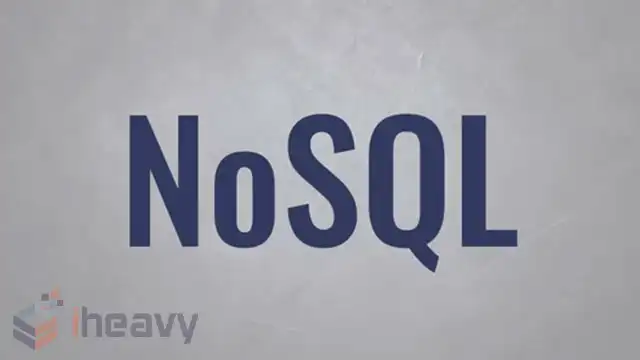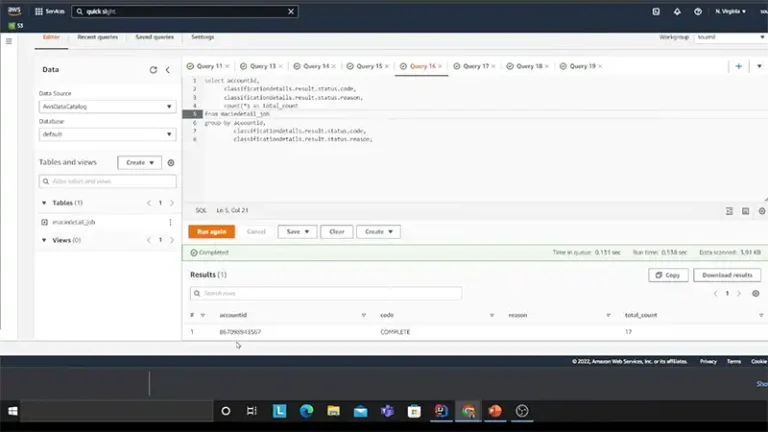5 Significant Use Of NoSQL Database
NoSQL databases are designed to efficiently manage large volumes of data and scale across distributed systems. They offer flexible data models that accommodate various data types, including unstructured and semi-structured data, without requiring predefined schemas.
This scalability and adaptability make NoSQL databases well-suited for applications with high data demands, such as big data analytics, real-time applications, and dynamic content management. We will gradually go through an overview of their use cases as well as their corresponding advantages.

Types of NoSQL Databases
The types of NoSQL databases include the following:
Document Stores (e.g., MongoDB, CouchDB)
Store data in JSON-like documents.
Useful for semi-structured data, and when you need to store nested data, such as user profiles or content management systems.
Key-Value Stores (e.g., Redis, DynamoDB)
Data is stored as key-value pairs.
Optimal for caching, session management, or storing user preferences.
Column-Family Stores (e.g., Cassandra, HBase)
Store data in columns rather than rows, enabling high performance and scalability.
Ideal for time-series data, large-scale distributed systems, and when you need fast read and write operations.
Graph Databases (e.g., Neo4j, Amazon Neptune)
Represent data as nodes and edges, making them perfect for handling relationships.
Used in social networks, fraud detection, and recommendation engines.
Use Cases for NoSQL Databases
NoSQL databases offer distinct advantages in scenarios where traditional relational databases may struggle, particularly in terms of scalability, flexibility, and performance. Let’s explore them.
1. Big Data
NoSQL databases are particularly well-suited for handling large volumes of data, often referred to as “Big Data.” This includes data that is generated at high velocity, comes from a variety of sources, and is often unstructured or semi-structured.
Why NoSQL for Big Data?
Scalability: NoSQL databases are designed to scale horizontally across many servers, making it easier to handle massive datasets. This is crucial for applications dealing with petabytes or even exabytes of data, such as social media platforms, online marketplaces, and scientific research databases.
Flexibility: The schema-less nature of many NoSQL databases allows them to easily adapt to changing data formats without requiring costly and time-consuming schema migrations.
Data Variety: Big Data often includes a mix of structured, semi-structured, and unstructured data (e.g., text, images, videos, logs). NoSQL databases can handle this variety more effectively than traditional relational databases.
Examples of Big Data Applications:
Retail: Tracking customer behavior across millions of transactions to optimize inventory and personalize marketing efforts.
Healthcare: Managing vast amounts of patient data, including medical records, imaging data, and genomic information, to improve diagnostics and treatment plans.
Finance: Analyzing high-frequency trading data, transaction logs, and market feeds to detect fraud and optimize trading strategies.
2. Real-Time Applications
Real-time applications require instant processing and response to incoming data. NoSQL databases are designed to handle such workloads efficiently.
Why NoSQL for Real-Time Applications?
Low Latency: In-memory NoSQL databases like Redis offer extremely low-latency data access, making them ideal for real-time applications where speed is critical.
High Throughput: NoSQL databases can handle a large number of concurrent operations, which is essential for applications that need to process a high volume of transactions or interactions per second.
Examples of Real-Time Applications:
Gaming Leaderboards: In online gaming, leaderboards must be updated in real-time as players score points. A NoSQL database can handle the high-frequency updates and retrieve the latest scores instantly.
Chat Applications: Messaging apps require real-time data access to ensure messages are sent and received instantaneously. NoSQL databases like MongoDB or Cassandra can manage these real-time interactions effectively.
Live Data Feeds: Stock market feeds, sports scores, and news updates are examples of live data streams that need to be processed and delivered in real time to users.
3. Content Management Systems (CMS)
Content Management Systems (CMS) often deal with various types of content, such as articles, blog posts, images, and videos, which may not fit neatly into a relational database structure.
Why NoSQL for CMS?
Flexible Data Models: NoSQL databases, particularly document stores like MongoDB, allow content to be stored in a flexible, hierarchical structure. This is beneficial when dealing with different types of content that have varying attributes.
Scalability: As the amount of content grows, NoSQL databases can scale out to handle increased storage and traffic needs, ensuring that the CMS remains responsive.
Examples of CMS Use Cases:
Publishing Platforms: Websites that host a large volume of articles, blogs, and multimedia content, such as news sites, often use NoSQL databases to manage and deliver content efficiently.
E-commerce Sites: Product catalogs, user reviews, and multimedia content on e-commerce platforms can be managed effectively with a NoSQL database, which can handle a diverse range of data formats and structures.
Social Media Platforms: Social networks that allow users to post a variety of content types (text, images, videos) benefit from the flexible storage options provided by NoSQL databases.
4. IoT and Sensor Data
The Internet of Things (IoT) involves a vast network of connected devices that generate continuous streams of data. This data often needs to be processed and analyzed in real time.
Why NoSQL for IoT?
High Write Throughput: IoT devices can generate an immense volume of data points, such as temperature readings, GPS coordinates, or sensor statuses, which need to be ingested quickly. NoSQL databases, particularly those optimized for time-series data like InfluxDB, excel in handling this workload.
Scalability and Flexibility: The ability to scale horizontally and adapt to new data types makes NoSQL databases ideal for IoT applications, where the data schema may evolve as new devices or sensors are added to the network.
Examples of IoT Use Cases:
Smart Homes: Managing data from a network of connected devices, such as thermostats, security cameras, and lighting systems, requires a database that can handle high-frequency, real-time updates.
Industrial IoT: Monitoring equipment in a factory for predictive maintenance involves collecting and analyzing sensor data to detect anomalies and prevent breakdowns.
Smart Cities: Managing data from various sources like traffic sensors, environmental monitors, and public utilities to optimize city operations and improve the quality of life for residents.
5. Social Networks
Social networks generate complex data structures, including user profiles, relationships, posts, comments, likes, and more. Managing this interconnected data efficiently is crucial for the performance of these platforms.
Why NoSQL for Social Networks?
Graph Databases: NoSQL graph databases like Neo4j are designed to handle the complex relationships and connections between entities, such as users and their friends or followers. This makes them ideal for social networks, where relationships are a key part of the data model.
Scalability and Performance: As social networks grow, they need to manage increasingly large volumes of data and user interactions. NoSQL databases can scale out horizontally to accommodate this growth without sacrificing performance.
Examples of Social Network Use Cases:
Friendship and Follower Relationships: Managing and querying user connections, such as friends or followers, in a social network can be efficiently handled by a graph database.
Activity Feeds: Aggregating and delivering personalized content feeds, such as posts and updates from friends, requires a database that can handle complex queries and high read/write throughput.
Recommendation Engines: Suggesting new friends, groups, or content based on user activity and connections relies on efficiently querying large, interconnected datasets.
Advantages of NoSQL Databases
NoSQL Databases have their unique position in the requirement lists of certain use cases. And the reason of their existance there are the following:
Scalability
Horizontal scaling: Easily add more servers to handle increased load.
Particularly beneficial for applications with massive amounts of data and high throughput requirements.
Flexibility
Adapt to changes in data structure without significant disruptions.
Allows storage of unstructured or semi-structured data, which is common in modern applications.
Performance
Optimized for specific types of queries (e.g., key-value lookups, document retrieval).
In-memory options (like Redis) provide extremely fast access to data.
High Availability
Often designed for distributed environments, providing built-in fault tolerance and redundancy.
Critical for applications requiring continuous availability, like e-commerce platforms or social media.
When to Use Relational Databases Instead
ACID Transactions: When you need strong consistency, atomicity, and durability.
Complex Queries: For applications that require complex joins, aggregations, and transactions.
Data Integrity: When enforcing strict schema constraints and data integrity is crucial.
Use Cases And Their Corresponding Advantages
The following table gives a clear view of how different use cases align with the specific strengths of NoSQL databases, helping in selecting the right database for a given application.
| Use Case | Corresponding NoSQL Advantages |
| Big Data | – Scalability: Handles massive datasets by scaling horizontally.- Flexibility: Adapts to changing data structures without needing schema changes.- Data Variety: Manages structured, semi-structured, and unstructured data efficiently. |
| Real-Time Applications | – Low Latency: Provides fast data access for real-time responses.- High Throughput: Manages a high volume of concurrent operations. |
| Content Management Systems (CMS) | – Flexible Data Models: Stores content with varying structures in a flexible manner.- Scalability: Handles growth in content and user interactions without performance degradation. |
| IoT and Sensor Data | – High Write Throughput: Ingests large volumes of data quickly.- Scalability: Grows to accommodate the addition of new devices and sensors.- Flexibility: Adapts to evolving data schemas. |
| Social Networks | – Graph Databases: Efficiently manages complex relationships and connections.- Scalability and Performance: Scales with user growth while maintaining performance. |
Frequently Asked Questions
Can NoSQL databases handle transactions?
Some NoSQL databases support basic transactions, but they often prioritize scalability and performance over strong ACID (Atomicity, Consistency, Isolation, Durability) properties. Newer NoSQL databases are incorporating more advanced transaction support.
Are NoSQL databases suitable for all types of applications?
NoSQL databases are ideal for applications that require scalability, flexible data modeling, and high performance for specific workloads. However, for applications requiring complex queries, joins, or strong consistency, a relational database might be more appropriate.
How do I choose between different NoSQL databases?
Choose a NoSQL database based on your specific needs: document stores for hierarchical data, key-value stores for fast access, column-family stores for high throughput and scalability, and graph databases for managing complex relationships. Consider factors such as data structure, query requirements, and scalability needs.
Concluding Remarks
NoSQL databases are ideal for handling large-scale, unstructured, or semi-structured data, providing flexibility and scalability for modern application needs. However, they are not always the best choice for every application, especially those that require complex querying or strong consistency guarantees.

![How to Check Database Size in SQL Server [In-depth Guide]](https://www.iheavy.com/wp-content/uploads/2023/09/How-to-Check-Database-Size-in-SQL-Server-768x432.webp)




